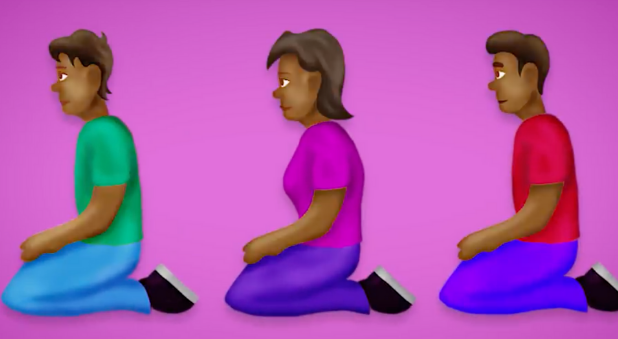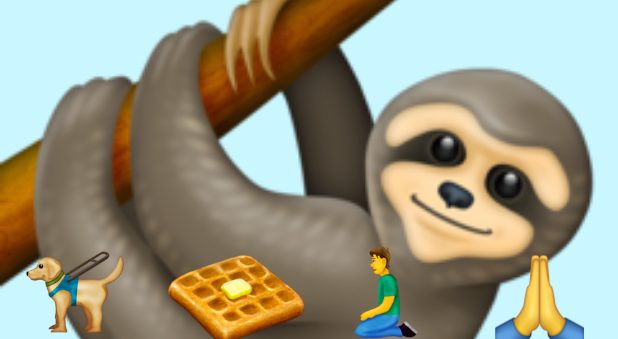Earlier this month, Unicode announced the 230 new emojis that will soon be added to the messaging apps on our phones. This represents a big change in the emoji that will soon be available to us - the last update introduced only 66 new emoji.
At first look, once you get past the sloth emoji - which personally I can already see myself using daily- there are some key themes that are evident in this new batch.
The new emojis emphasise inclusivity and representation. There are robotic limbs, manual and motorized wheelchairs, hearing aids and guide dogs. There are also racially mixed couples, gender neutral couple and a hindu temple.
The new emoji that could change your attitude to prayer
It also features an emoji simply called “man kneeling ” and “woman kneeling ”. Available in a range of different skin tones, this emoji is pictured with its hands in its lap and has been unofficially dubbed the “praying emoji”.
Now this isn’t the first praying emoji or even emoji used to represent different religious experiences. We’ve already used several emoji including the “praise” Emoji and “Folded hands”.
The powerful connotations of this new praying emoji.
While both the praying hands emoji and praise hands emoji emphasise the individual, and others emphasise the location or tools involved in prayer, the kneeling emoji positions the person in relation to God. More than that, it suggests a specific attitude of humility towards God.

Come, let us worship and bow down, Let us kneel before the LORD our Maker. Psalm 95:6
The act of kneeling positions us in looking up to God, relying on Him, submitting to his will. We see this in the gospels, when Jesus kneels to pray (Luke 22:41). We see this in Ephesians, when Paul describes how God has allowed us “boldness, access and confidence” through faith in Jesus, and concludes his paragraph with “For this reason, I bow my knees before the Father…” (Ephesians 3:11-14). And it is something we should see in our own lives.
Whether or not you personally kneel when you pray, the attitude which physically kneeling represents is one we should strive to emulate. Whereas the folded hands prayer emoji connotates luck and the horizontal relationship between an individual and the person they are praying for, the kneeling emoji seriously contextualises prayer as an act of speaking to God. It positions us not as an equal, but as someone who is able to come before the Father.
Don’t underestimate the influence a new prayer emoji can have on your spiritual life
Media representation massively impacts peoples self-perception. Carlos Corters wrote in his book “The Children Are Watching: How the Media Teach about Diversity” that media representation influences both how audiences view others, but also how they view themselves.
Emoji are not hollywood movies, or mass news media, but they do play a key role in how we communicate. On average, each year 6 billion emoticons are sent between individuals. In 2015, Oxford University Press nominated the face with tears of joys as the word of the year
The emojis we have access to will change how we think of ourselves, others and our relationship with God.
So as you go to message a friend or type out a prayer, think about the influence of the emoji you use.

The full range of new emojis.














